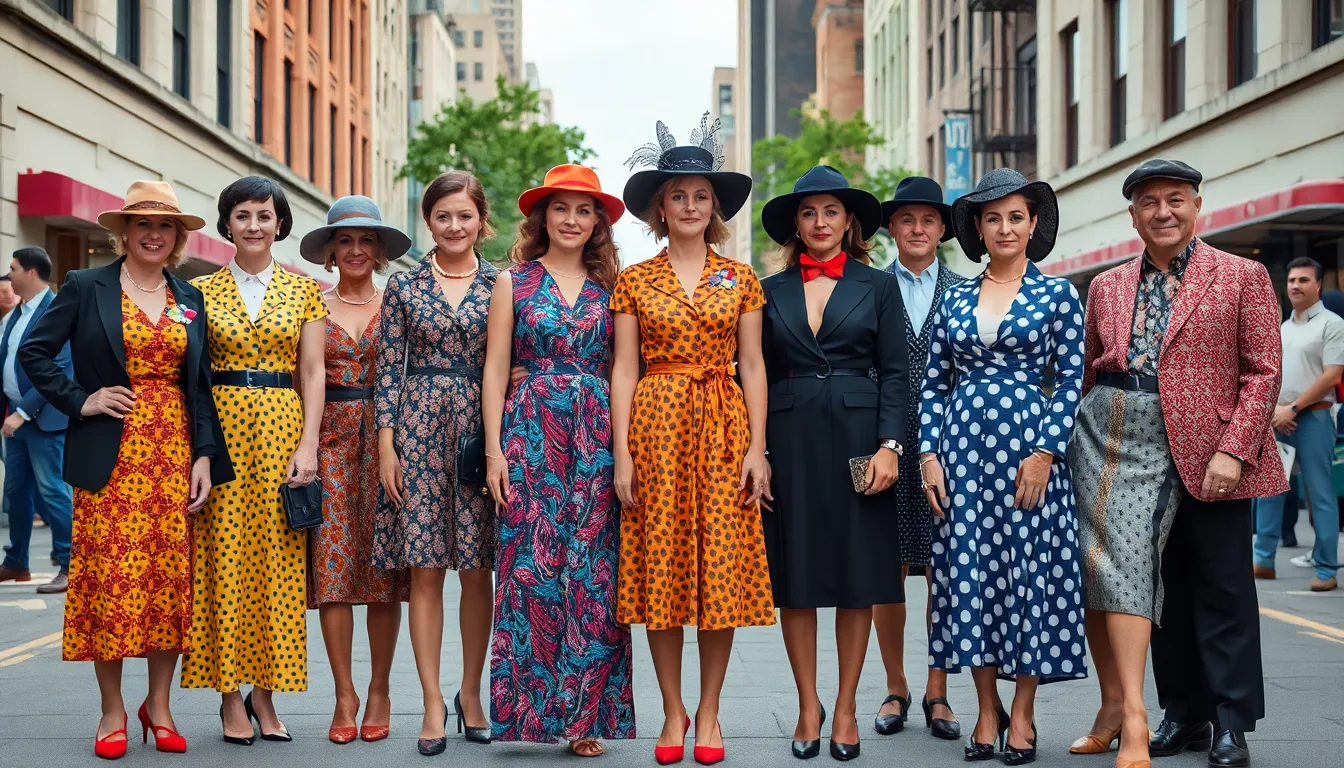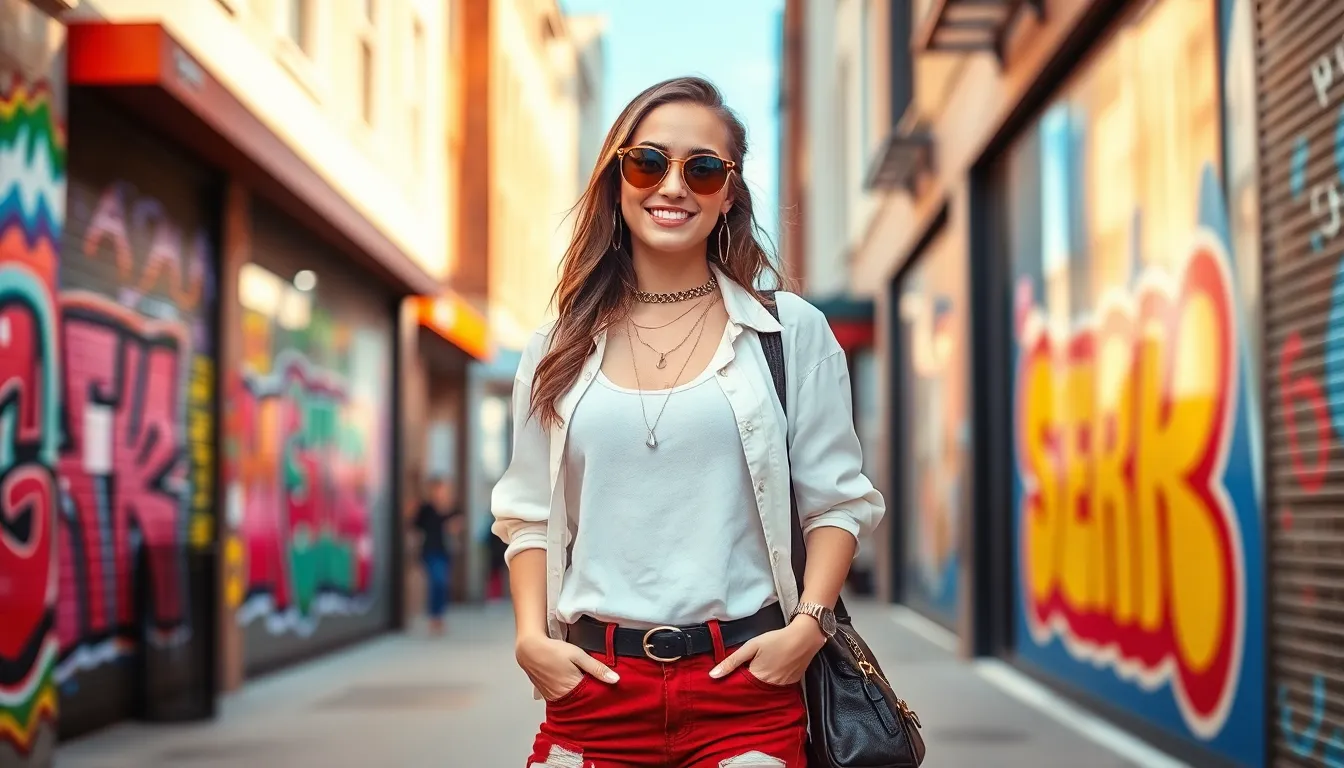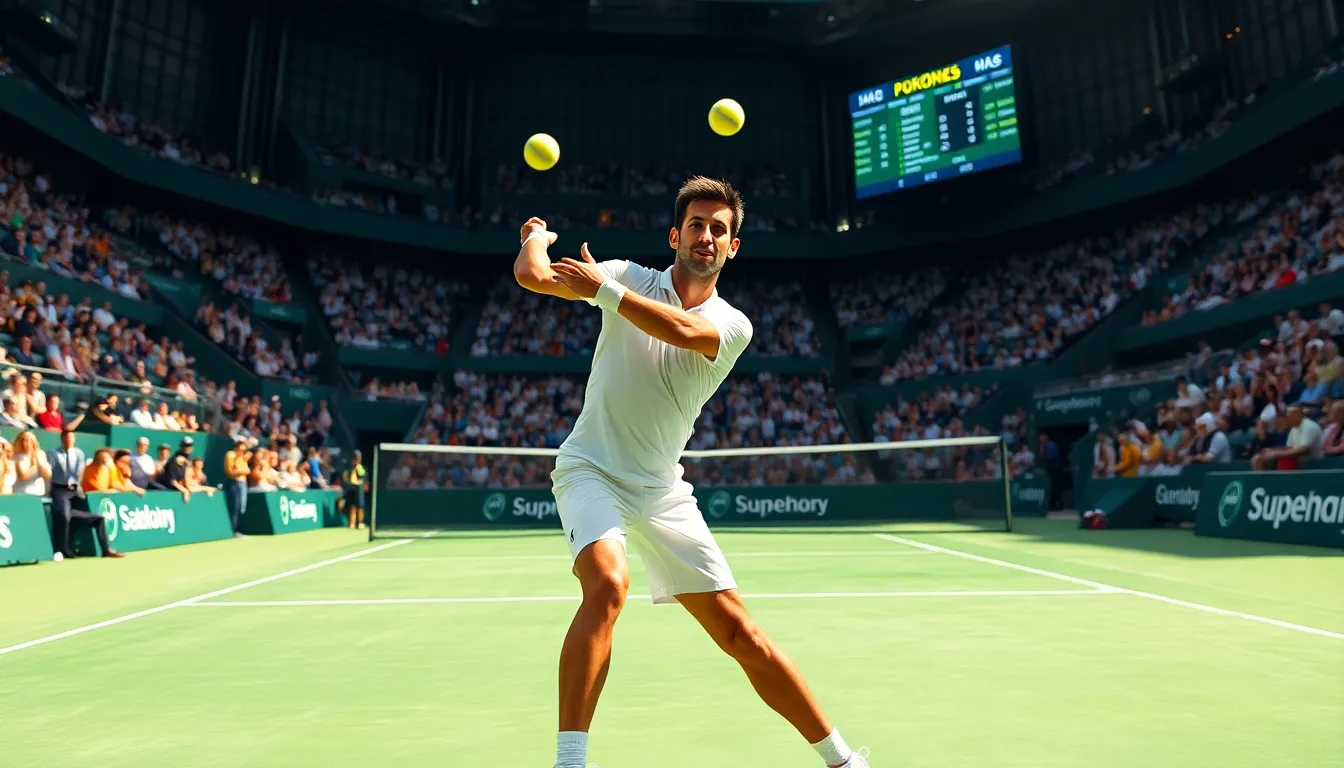Table of Contents
ToggleFashion isn’t just about clothes; it’s a time machine that whisks us through history, trends, and some truly questionable choices. From the extravagant gowns of the Victorian era to the grunge looks of the ’90s, fashion has undergone a wild transformation that’s as entertaining as it is enlightening. Who knew that bell-bottoms would one day make a comeback, proving that even style has a sense of humor?
Overview Of Fashion Evolution
Fashion evolution reflects societal changes and cultural shifts over time. Various eras showcase distinct styles that capture the essence of their period. For example, the opulence of the Victorian era featured intricate designs, corsets, and luxurious fabrics, symbolizing wealth and status. The 1920s introduced a radical shift with flapper dresses, representing women’s liberation and changing social norms.
Significantly, the ’50s embraced a more structured silhouette, characterized by full skirts and tailored jackets. These styles often referenced post-war stability and optimism. Bold colors and patterns emerged during the ’60s and ’70s, introducing youth culture and countercultural movements.
Throughout the ’80s, power dressing took center stage, with shoulder pads and vibrant colors reflecting the economic climate and gender dynamics of the workplace. Emphasis on individuality marked the ’90s with grunge styles and minimalist aesthetics, highlighting the rise of personal expression in fashion.
The early 2000s witnessed the fusion of high fashion and streetwear, illustrating the convergence of elite and everyday styles. Rapid globalization led to diverse influences, as designers drew inspiration from various cultures. Today, sustainable fashion is a vital focus, driven by awareness of environmental impact and ethical production.
Fashion continues to surprise through cyclical trends, illustrating its playful nature. New interpretations of past styles emerge consistently, reinforcing that fashion is not only a reflection of personal identity but also a lens through which to view historical and cultural development.
Historical Timeline Of Fashion

Fashion history reflects society’s changing values and innovations. Each era possesses distinct styles that illustrate cultural shifts.
Ancient Civilizations
Egyptians adorned themselves with linen garments, revealing a preference for both comfort and elegance. Greeks emphasized draped clothing, illustrating movement and sophistication through styles like the chiton. Romans adopted various techniques, including tailoring, emphasizing social status via garments. The color and fabric choices often signified one’s position in society. Jewelry and accessories complemented the overall look, enhancing visual appeal and showcasing wealth.
Renaissance Era
The Renaissance brought a revival of art and intellectual pursuits, significantly influencing fashion. Men opted for tailored jackets and breeches, while women wore elaborate gowns with corsets and voluminous skirts. Fabrics like silk and velvet became prominent, reflecting the period’s wealth and luxury. Colors brightened as dyes improved, allowing vivid hues to dominate. Accessories such as ruffs and elaborate headpieces also emerged, marking social status and personal taste.
20th Century Trends
The 20th century witnessed rapid changes fueled by events and movements. The 1920s introduced flapper dresses, symbolizing women’s newfound freedom. As the decades progressed, styles shifted from the conservative to the bold. The ’50s emphasized structured silhouettes, while the ’60s and ’70s explored youth culture through vibrant patterns and eclectic designs. The rise of punk in the ’80s pushed boundaries, and by the ’90s, minimalism and grunge took center stage. Each trend not only reflected aesthetic choices but also societal values and transformations.
Influences On Fashion Evolution
Fashion evolution reflects various influences, shaping styles over time. Cultural movements and technological advancements play crucial roles in this dynamic landscape.
Cultural Impacts
Cultural influences significantly shape fashion trends. The rise of subcultures often introduces new styles, exemplified by the 1960s hippie movement advocating for freedom and peace, which popularized bohemian attire. Social changes, such as the women’s rights movement, brought about more functional clothing, allowing women to express their independence. Film and music also leave lasting marks on fashion. Icons like Marilyn Monroe and David Bowie inspired fans to embrace bold and unconventional looks. Additionally, global interactions foster cross-cultural exchanges, merging traditional designs with contemporary aesthetics. Such influences create diverse fashion landscapes that resonate with societal values.
Technological Advancements
Technological innovations continually transform fashion. The introduction of synthetic fabrics revolutionized clothing production, allowing for increased accessibility and variety. Innovations in manufacturing, such as computer-aided design, streamline the design process, enabling designers to experiment more freely. Fast fashion emerged due to these advancements, rapidly bringing runway styles to retail shelves. E-commerce platforms have changed how consumers purchase clothing, expanding access to global brands and trends. Social media’s rise also plays a vital role, enabling influencers to disseminate styles quickly and widely. With these advancements, fashion evolves to meet the needs and desires of modern society.
Contemporary Fashion Evolution
Contemporary fashion continues to reflect societal values and trends, showcasing innovation and responsiveness to cultural shifts. Key developments in sustainable fashion and digital influence have significantly shaped today’s fashion landscape.
Sustainable Fashion
Sustainable fashion emphasizes eco-friendly practices and ethical production processes. This movement seeks to minimize environmental impact and promote fair labor conditions. Brands are increasingly utilizing organic materials, recycled fabrics, and transparent supply chains. For example, companies like Stella McCartney advocate for animal-free products and sustainable practices. Consumers play a crucial role, demanding accountability and transparency from brands they support. This focus on sustainability aligns with growing awareness of climate change and environmental preservation. Consequently, consumers are more inclined to choose brands that demonstrate a commitment to ethical standards.
Digital Influence And Social Media
Digital influence reshapes how fashion is marketed and consumed. Social media platforms like Instagram and TikTok facilitate instant communication and trend dissemination. Influencers play a pivotal role by showcasing styles and collaborating with brands, often resulting in viral trends. Engagement through hashtags and visual content allows for broader audience reach and interaction. Additionally, e-commerce has transformed shopping habits, allowing consumers easy access to global fashion. Data-driven insights guide brands in understanding consumer preferences and trends. As a result, fashion continues to evolve rapidly, adapting to the virtual marketplace where immediate feedback shapes future designs.
Future Of Fashion Evolution
Fashion evolution continues to adapt to shifting cultural landscapes and technological advancements. Sustainability emerges as a leading focus, with brands pursuing eco-friendly practices. An example includes the rise of companies dedicated to transparent supply chains and ethical labor practices. Digital technology transforms how consumers interact with fashion. Social media platforms facilitate immediate trend dissemination, influencing purchasing decisions. Innovations like augmented reality allow virtual try-ons, enhancing the online shopping experience.
Consumer preferences shape industry standards, with many seeking brands that champion environmental initiatives. Fast fashion faces scrutiny, prompting a shift toward quality over quantity. This movement encourages the upcycling of garments and the adoption of capsule wardrobes. Influencers play a pivotal role in this evolving landscape, with their endorsements impacting brand visibility and consumer engagement. Platforms like TikTok amplify grassroots trends, allowing niche styles to gain sizable followings.
Data analytics empowers brands to tailor offerings based on individual preferences. Insights gathered from consumer interactions inform product development and marketing strategies. This shift creates a more personalized shopping experience, aligning with a growing desire for customized items. The intersection of tradition and innovation plays a critical role in shaping future aesthetics. Timeless styles may blend with futuristic elements, creating a fusion of the past and present.
Fashion shows of the future could focus on inclusivity, showcasing diverse body types and ethnic backgrounds. The traditional runway may evolve, embracing virtual formats that prioritize accessibility. As organizations grapple with the impact of climate change, collaborations between fashion and technology will likely pave the way for new sustainability initiatives. Enhanced materials may emerge, further minimizing the environmental footprint. Fashion’s future remains vibrant, driven by the interplay of culture, technology, and consumer values.
Fashion’s evolution is a testament to its dynamic nature and its ability to reflect societal changes. From the opulence of past eras to the contemporary focus on sustainability and digital innovation, fashion continually adapts to meet the needs of society. The interplay between cultural movements and technological advancements has shaped not only trends but also consumer behaviors and values.
As the industry looks ahead, it’s clear that the future of fashion will prioritize inclusivity and eco-conscious practices. The ongoing dialogue between tradition and modernity ensures that fashion remains a vibrant and relevant form of self-expression. With each shift, fashion not only tells a story but also invites individuals to participate in a collective narrative that spans generations.





